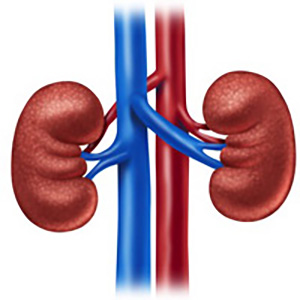External validation of Resorlu-Unsal stone score in predicting outcomes after retrograde intrarenal surgery. Experience from a single institution

All claims expressed in this article are solely those of the authors and do not necessarily represent those of their affiliated organizations, or those of the publisher, the editors and the reviewers. Any product that may be evaluated in this article or claim that may be made by its manufacturer is not guaranteed or endorsed by the publisher.
Objective: Pre-operative assessment of renal stones is essential in selecting treatment options and achieving high success rates for retrograde intrarenal surgery (RIRS). Several nephrolithometric scoring systems have been developed using pre-operative clinical data and stone characteristics. Resorlu-Unsal stone score (RUSS) is composed of four different parameters, and each of them adds 1 point to the final score. One point is added in patients with stone size > 20 mm, lower calyceal stones and infundibulo-pelvic angle < 45°, stone number > 1, and abnormal anatomy, respec-tively. RUSS categorizes patients into four distinct groups and aims to predict stone-free rates (SFR) after RIRS. We externally validated RUSS and evaluated its predictive accuracy.
Materials and Methods: We performed a retrospective analysis of patients who underwent RIRS for renal stones between January 2020 and December 2021. Patient age, pre-operative hydronephrosis, stone size, stone density as Hounsfield Unit
(HU), operative time and RUSS were investigated as potential preoperative predictive factors for stone-free status. RUSS was applied to all patients, and the nomogram was externally vali-dated. Area under the curve (AUC) was used for clinical validity assessment.
Results: The present study included a total of 79 patients. Mean patient age was 55.1 ± 15.4 years with a mean stone size was 14.2 ± 4.4 mm. Overall, 62/79 (78.4%) patients were stone free after the initial treatment. After applying RUSS, 36 (45.6%), 29 (36.7%), 10 (12.6%), and 4 (5.1%) patients had a score of 0, 1, 2, and 3, respectively. On multivariate logistic regression RUSS (OR = 0.220; 95%CI: 0.086-0.567; p = 0.002) was identified as the only predictor of postoperative stone-free status.
Conclusions: RUSS is a user-friendly scoring system that may predict postoperative stone-free rate after RIRS with great effi-cacy and accuracy.
Qian X, Wan J, Xu J, et al. Epidemiological trends of urolithiasis at the global, regional, and national levels: a population-based study. Int J Clin Pract. 2022; 2022:6807203. DOI: https://doi.org/10.1155/2022/6807203
Zheng C, Xiong B, Wang H, et al. Retrograde intrarenal surgery versus percutaneous nephrolithotomy for treatment of renal stones > 2 cm: a meta-analysis. Urol Int. 2014; 93:417-424. DOI: https://doi.org/10.1159/000363509
Karakoyunlu N, Goktug G, Sener NC, et al. A comparison of stan-dard PCNL and staged retrograde FURS in pelvis stones over 2 cm in diameter: a prospective randomized study. Urolithiasis. 2015; 43:283-287. DOI: https://doi.org/10.1007/s00240-015-0768-2
Donaldson JF, Lardas M, Scrimgeour D, et al. Systematic review and meta-analysis of the clinical effectiveness of shock wave lithotrip-sy, retrograde intrarenal surgery, and percutaneous nephrolithotomy for lower-pole renal stones. Eur Urol. 2015; 67:612-616. DOI: https://doi.org/10.1016/j.eururo.2014.09.054
Zhao Z, Sun H, Zeng T, et al. An easy risk stratification to recom-mend the optimal patients with 2-3 cm kidney stones to receive ret-rograde intrarenal surgery or mini-percutaneous nephrolithotomy. Urolithiasis. 2020; 48:167-173. DOI: https://doi.org/10.1007/s00240-019-01134-0
Breda A, Angerri O. Retrograde intrarenal surgery for kidney stones larger than 2.5 cm. Curr Opin Urol. 2014; 24:179-183. DOI: https://doi.org/10.1097/MOU.0000000000000030
Calarco A, Frisenda M, Molinaro E, Lenci N. The active guidewire technique versus standard technique as different way to approach ureteral endoscopic stone treatment. Arch Ital Urol Androl. 2021; 93:431-435. DOI: https://doi.org/10.4081/aiua.2021.4.431
Xiao Y, Li D, Chen L, et al. The R.I.R.S. scoring system: An inno-vative scoring system for predicting stone-free rate following retro-grade intrarenal surgery. BMC Urol. 2017; 17:105. DOI: https://doi.org/10.1186/s12894-017-0297-0
Jung JW, Lee BK, Park YH, et al. Modified Seoul National University Renal Stone Complexity score for retrograde intrarenal surgery. Urolithiasis. 2014; 42:335-340. DOI: https://doi.org/10.1007/s00240-014-0650-7
Resorlu B, Unsal A, Gulec H, Oztuna D. A new scoring system for predicting stone-free rate after retrograde intrarenal surgery: the "resorlu-unsal stone score". Urology 2012;80:512-518. DOI: https://doi.org/10.1016/j.urology.2012.02.072
Elbahnasy AM, Shalhav AL, Hoenig DM, et al. Lower caliceal stone clearance after shock wave lithotripsy or ureteroscopy: the impact of lower pole radiographic anatomy. J Urol. 1998; 159:676-82. DOI: https://doi.org/10.1016/S0022-5347(01)63699-1
Aboumarzouk OM, Monga M, Kata SG, et al. Flexible ureteroscopy and laser lithotripsy for stones > 2 cm: a systematic review and meta-analysis. J Endourol. 2012; 26:1257-63. DOI: https://doi.org/10.1089/end.2012.0217
Hyams ES, Munver R, Bird VG, et al. Flexible ureterorenoscopy and holmium laser lithotripsy for the management of renal stone burdens that measure 2 to 3 cm: a multi-institutional experience. J Endourol. 2010; 24:1583-8. DOI: https://doi.org/10.1089/end.2009.0629
Selmi V, Sari S, Oztekin U, et al. External validation and com-parison of nephrolithometric scoring systems predicting outcomes of retrograde intrarenal surgery. J Endourol. 2021; 35:781-788. DOI: https://doi.org/10.1089/end.2020.0491
Molina WR, Kim FJ, Spendlove J, et al. The S.T.O.N.E. Score: a new assessment tool to predict stone free rates in ureteroscopy from pre-operative radiological features. Int Braz J Urol. 2014; 40:23-9. DOI: https://doi.org/10.1590/S1677-5538.IBJU.2014.01.04
Park J, Kang M, Jeong CW, et al. External validation and evalu-ation of reliability and validity of the modified Seoul National University Renal Stone Complexity Scoring System to predict stone-free status after retrograde intrarenal surgery. J Endourol. 2015; 29:888-93. DOI: https://doi.org/10.1089/end.2014.0901
Maugeri O, Dalmasso E, Peretti D, et al. Stone free rate and clin-ical complications in patients submitted to retrograde intrarenal sur-gery (RIRS): Our experience in 571 consecutive cases. Arch Ital Urol Androl. 2021; 93:313-317. DOI: https://doi.org/10.4081/aiua.2021.3.313
Sfoungaristos S, Gofrit ON, Mykoniatis I, et al. External valida-tion of Resorlu-Unsal stone score as predictor of outcomes after ret-rograde intrarenal surgery. Int Urol Nephrol. 2016; 48:1247-1252. DOI: https://doi.org/10.1007/s11255-016-1311-2
Özman O, Akgül HM, Basataç C, et al. RIRSearch Study Group. Recent scoring systems predicting stone-free status after retrograde intrarenal surgery; a systematic review and meta-analysis. Cent European J Urol. 2022; 75:72-80.
PAGEPress has chosen to apply the Creative Commons Attribution NonCommercial 4.0 International License (CC BY-NC 4.0) to all manuscripts to be published.


 https://doi.org/10.4081/aiua.2022.3.311
https://doi.org/10.4081/aiua.2022.3.311



